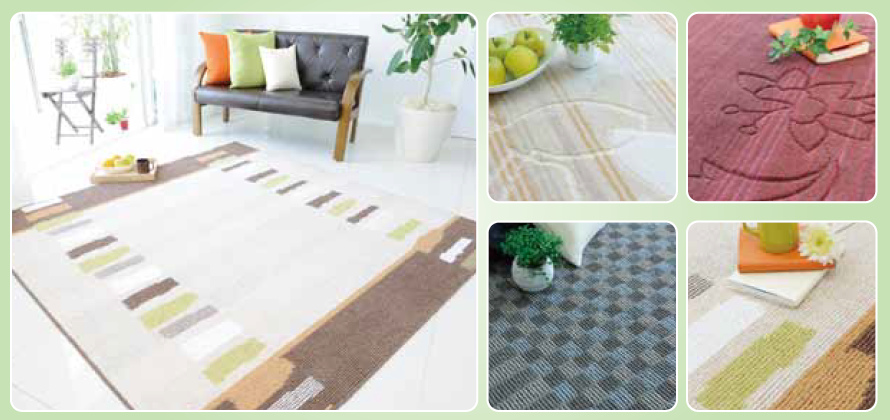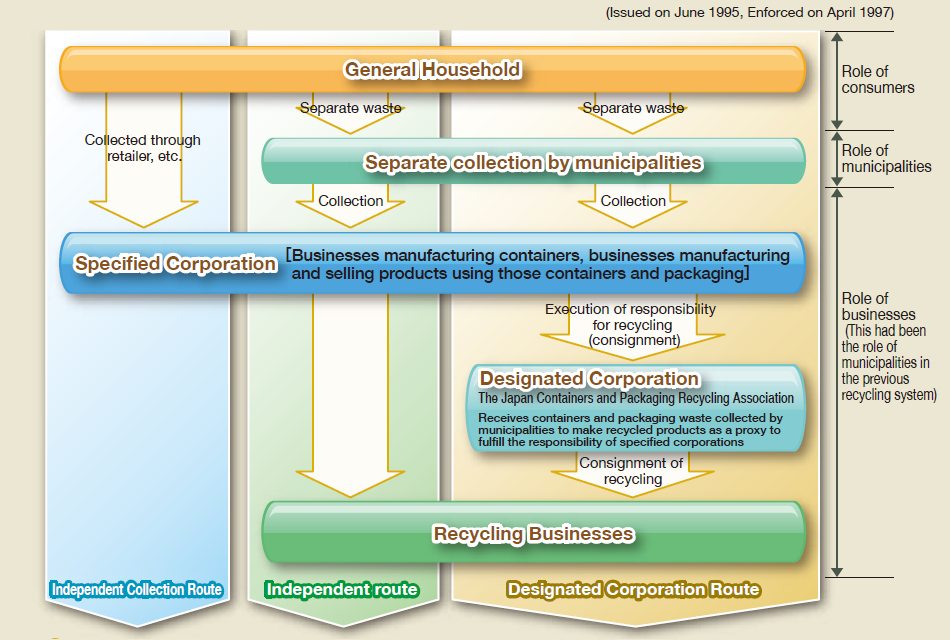PET bottle recycling technology – Technology to produce high-grade recycled PET resin and recycle products

Collection and recycling to make diverse products
Under the 3R policy (Reduce, Reuse, Recycle), Japan has been collecting PET bottles, food trays, and cans separately for reuse as recycle resources in the manufacturing of new products. PET bottles are collected in accordance with the Act on the Promotion of Sorted Collection and Recycling Containers and Packaging, and they are used to make a variety of textile products, etc. Relatively high-grade PET bottles are collected and remade into PET bottles or carpets with the high technology possessed by Japan.
Collection of PET bottles and handing them over to reproduction contractors
The collected bottles are cleaned, and caps and labels taken off to improve their quality. The bottles are then compressed, bound and passed on to reproduction contractors.
Removal of foreign matters from PET bottles
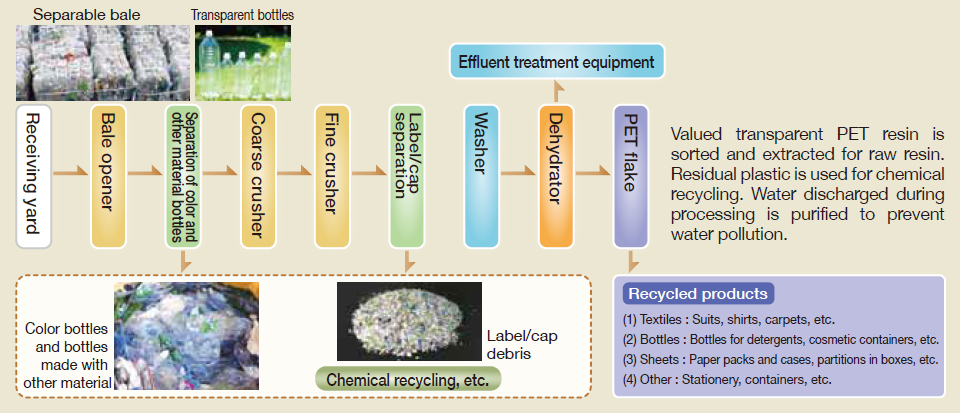
Examples of products made from recycled PET resin

Resource recycling technology to produce high quality products
Recycled resin from PET bottle waste is used to make material for civil engineering and inner cotton for bedding. It was thought that making long fiber or resin product that will not decolorize would be difficult to achieve.
One Japanese company began recycling and reproducing PET bottles in China, Thailand and Taiwan. There are cases of recycled material being colored at the resin stage and made into high quality carpets using high level sewing skill.
Carpets, car mats, hot covers, area rugs Examples of making floor covering for living space
 One major food corporation is moving forward with the remaking of used PET bottles into new PET bottles by combining material recycle method and chemical recycle method. With the material recycle method, collected bottles are washed, dissolved under high temperature and filtered to reproduce high quality plastic resin. New PET bottles are made using 50% recycled resin produced through the material recycle method and 50% recycled resin produced through the chemical recycle method, for 100% recycled PET bottles for beverages.
One major food corporation is moving forward with the remaking of used PET bottles into new PET bottles by combining material recycle method and chemical recycle method. With the material recycle method, collected bottles are washed, dissolved under high temperature and filtered to reproduce high quality plastic resin. New PET bottles are made using 50% recycled resin produced through the material recycle method and 50% recycled resin produced through the chemical recycle method, for 100% recycled PET bottles for beverages.
This reproduction led to an approximately 90% reduction in the use of petroleum-derived resources and a 60% reduction in CO2 emission.
System to efficiently collect PET bottles
Japan passed the Law for the Promotion of Sorted Collection and Recycling Containers and Packaging in 1995, driving municipalities to collect recyclable resources. With it Japan has structured a sophisticated recycling system. Waste PET bottles contain foreign material and substances which only allowed reproduction into low quality products; however, today’s recycling technology developed sophisticated methods for foreign matter removal and recycling, bringing out high added value products.
Some municipalities set up a subsidy system for neighborhoods that voluntarily collect recyclable waste, thereby promoting the PET bottle collection and recycling of waste.
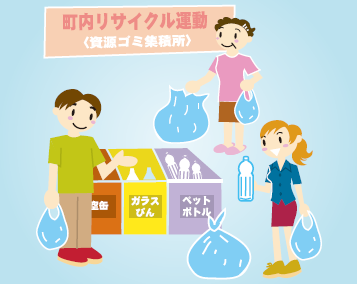
Voluntary recycling activities to collect resources, such as PET bottles, and handing them over to recycle businesses is called Shudan Kaishu (Group Collection).
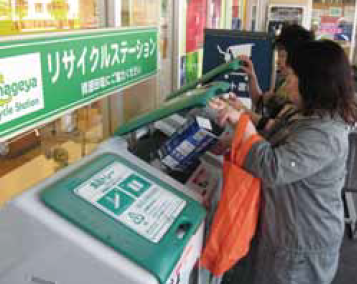
With the objective of reducing and recycling waste, separate collection boxes are set up for collect PET bottles, food trays, milk car tons and newspaper. Source:Hino City’s website
Structure of the Law for the Promotion of Sorted Collection and Recycling Containers and Packaging in Japan
Law for the Promotion of Sorted Collection and Recycling Containers and Packaging
This law establishes a system in which waste plastic containers and packaging, glass and paper containers discarded from homes are collected through sorted collection by municipalities and retailers, which are then handed over to the Japan Containers and Packaging Recycling Association. The association then consigns reproduction companies to recycle them into new products.


